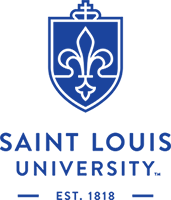Newswise — In the first study of its kind, researchers at Saint Louis University are recruiting patients for a clinical trial that will use cutting-edge imaging equipment to map the brain injuries of combat veterans and civilians, aiming to better understand the nature of their injuries. Funded by a $5.3 million grant from the U.S. Department of Defense, researchers will use three types of imaging equipment together, producing better data and a more complete taxonomy of brain injuries, information that investigators hope may lead to better treatment for blast injuries and car accidents.
"It's an extraordinarily significant study. We are casting about with a new net. We think there is a lot of information that we don't know about brain injuries," said Richard Bucholz, M.D., lead investigator of the study and director of the division of neurosurgery at Saint Louis University School of Medicine.
"It's an opportunity to get a better handle on the problem, to see what actually constitutes head injury as opposed to relying on a vague description of someone who is having problems after a blow to the head."
Traumatic brain injury is caused by physical trauma to the head, and symptoms can range from mild, with headaches or nausea, to severe, with seizures or decreased levels of consciousness. In the United States, approximately 1.4 million people suffer traumatic brain injuries each year. Of these, 230,000 are hospitalized and survive, while another 50,000 die.
At the same time, combat veterans, now equipped with better body armor and armored vehicles, are thought to be surviving injuries that were once lethal and are returning from war zones with brain injuries rather than fatal wounds.
As imaging technology and knowledge of the brain continue to advance, researchers believe that they can best leverage these developments by combining several types of imaging techniques: 3 Tesla MRI (magnetic resonance imaging), 64 Slice PET/CT (positron emission tomography / computed tomography), and MEG (magnetoencephalography). The 3 Tesla MRI and PET/CT provide structural images while MEG produces functional imaging.
"The aim of the study is to try to understand situations where patients with moderate head injury have anatomically normal brains but significant neurological impairment," said Bucholz. "We have noticed soldiers coming out of the Iraqi conflict whose MRI and CT images look structurally normal, but who nevertheless have significant neurological deficits. We're trying to figure out why these brains are structurally normal but functionally abnormal.
"The situation is akin to looking at a city from 50,000 feet. We can see the highways and bridges and we can make out the outlines, but that doesn't tell us anything about how the traffic is moving on the ground. That is what functional imaging will tell us."
Scientists once believed that an injured brain was irreversibly damaged and that its function could not be recovered after being lost. It now appears, however, that the brain has the remarkable ability to rewire itself - if one pathway is damaged, another may be able to take over. Researchers anticipate that this study may aid them in identifying specific areas of the brain that can be rewired, as opposed to those which, once damaged, cannot be redirected.
In order to take advantage of the brain's capacity to rewire, doctors need to know which areas of the brain continue to work, something the functional imaging will be able to tell them. By collecting data from several types of imaging equipment and plotting the results together, researchers will have a more complete picture of the state of an injured patient's brain.
Researchers hope to find correlations between injured circuits and neurological symptoms. If they can determine which area of the brain corresponds with a particular neuropsychological problem, like speech or movement of a pinkie finger, they may, in some cases, be able to develop therapies. In this way, researchers hope to learn more about post-traumatic stress disorder (PTSD). If doctors are able to detect the disorder in images and quantify it, they'll be better equipped to treat it.
The study, which will last around four years, seeks people age 18 and older who have suffered traumatic brain injury. Between 120 and 150 participants will be enrolled in the SLU study. The group will include veterans and civilians with traumatic brain injury, as well as healthy civilians who have not suffered injury. Veterans will be enrolled from across the nation and civilians will be enrolled from the St. Louis area. Active duty military personnel are not eligible to participate in the study.
Patients will be given neuroimaging and neurocognitive evaluations, which will last about two days. Up to 30 patients may be asked to enroll in a follow-up study 12 months after their initial participation.
Non-active duty military veterans who participate in the trial will be provided with travel, lodging, and meals. All participants will be compensated for their time and all study related procedures will be provided at no-cost.
"There is a lot of interest on the part of those who have head injuries to know 'What is wrong with me? Why am I not the person I was before the head injury?' said Bucholz. "For these people, I think it's incredibly frustrating to get a structural image that says nothing's wrong, and yet to know that, indeed, something is wrong."
People wanting more information or to find out whether they qualify to participate in the study should call 314-977-8560.
Established in 1836, Saint Louis University School of Medicine has the distinction of awarding the first medical degree west of the Mississippi River. The school educates physicians and biomedical scientists, conducts medical research, and provides health care on a local, national and international level. Research at the school seeks new cures and treatments in five key areas: cancer, liver disease, heart/lung disease, aging and brain disease, and infectious disease.
